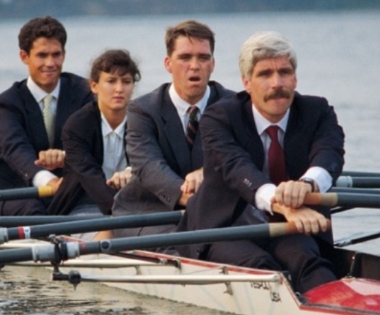As we enter the mid-year business with our associations and Boards of Directors, the AZCMS staff is preparing for our busiest time of year. With the budget season, the return of the winter visitors and planning for annual meetings, we are turning up the “teamwork”. This involves a combined effort of staff, as well as enhancing our organization’s performance. We like to refer to this as the AZCMS Synergy! However, our success is not entirely predicated on these adjustments.
Teamwork is often spoken about in leadership circles, but seldom does an example of it avail itself in situations involving the business’ clients, which is the third part of “teamwork”. The HOA industry is unique in that there is a very close working relationship with the staff and the clients. What other industry can you think of where the client is mostly responsible for making the decisions; whereas the staff members are responsible for ensuring the execution of the work?
For the purpose of this article, I will use a story about a rowboat, where eight-oared racing crew members came together as a team in their epic quest for a gold medal at the 1936 Berlin Olympics; a book titled The Boys in a Boat by Daniel James Brown.
One clear impression I had of rowing when reading the book, was the depth of challenges—what Brown calls “paradoxes”—involved in performing as a team back in 1936 and today. The racing shell is powered by large and physically powerful men and women, but it is commanded, controlled and directed by the smallest and least powerful person in the boat—the coxswain, who nowadays is often a woman managing an otherwise male crew. In 1936, the coxswain was a man called Bobby Moch.
Whoever the coxswain is, he or she must be an integral part of the team and understand how everyone is performing moment to moment, while not losing sight that he or she is part of the team as well. In the HOA industry, this might translate to the board president or the community manager. Does this remind you of a HOA board meeting you have attended? Coxswains must use empathy, knowing how each individual is experiencing their performance and supporting and enhancing this effort for all eight members so that they move as one in their goal to glide through the water as quickly as possible.
The challenge facing the team is to perform a complicated sequence of movements, where each member must execute with precise skill, knowing that as they increase their speed, knowing that as they increase their speed, the task becomes exponentially more difficult as the stroke rate increases. As the boat goes faster, the harder it is to row. As the speed increases, the penalty for technical miscues can be devastating: an oar touching the water a fraction of a second too early or too late; one crew member not breaking his arms at the right point in stroke; rowing out of unison as a boatful of individuals, not as a synchronized crew. The crew must exert the required amount of effort together and peak, as an orchestra crescendo in a musical score. This type of synergy would result in an ideal relationship between AZCMS and the Association.
All of these challenges are subsumed into the biggest challenge for a team: the psychological challenge. Individually, the members in the boat have strong egos, healthy self-esteem and self-confidence, abundant self-reliance and independence, and enormous willpower. They must be resilient, not only to the pain required in the effort, but resilient to the frustration of sitting in a long, narrow boat and dealing with others. Does this remind you of your board meetings? This work requires the complete abandonment of the self. No member is the star of the team. Rowers and the coxswain exhibit a perfectly synchronized flow of collective muscles and sounds: a collective will focus on the goal of propelling the boat through the water with the machine-like movement of the oars.
They must perform as a crew, with each adapting to the strengths and shortcomings of the other. The long-armed member must adjust to the stronger back of another member. Each needs to suppress their individual egos for the sake of the whole. Each must empathize with the other’s point of view, discerning what is needed and quickly adjust. Each must open their heart to every other member and be willing to get past their own feelings of disappointment. Each must give themselves up for the entire crew’s effort, rowing as the extension of the teammate, in front and behind.
Connecting The Boys in a Boat and crew to the HOA industry, specifically, the relationship between AZCMS and our Association’s Boards of Directors was an easy connotation. Teamwork is so much more powerful for goal accomplishment. As the President of AZCMS and the leader of our Executive Team, I am mindful of the impact that our business relationships have in terms of influencing others, exhibiting exemplary team behavior and avoiding pitting one member of the team against another to induce a desired behavioral outcome.
At AZCMS, we take it very seriously that we have entered a binding contractual relationship with your association. A relationship that develops over time and evolves into a “same boat” type of synergy as the crew in the winning boat in 1936. As professionals, we have firsthand experience of how the relationship between AZCMS and your association can be successful by working as a team.
Karen Kass, PCAM
President/CEO
Arizona Community Management Services, LLC

